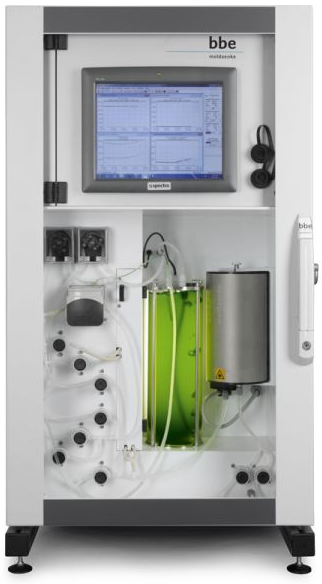Toxicity Case Study Summary
On-line monitoring in a municipal waste water treatment plant in Northern Italy - management of a toxicity and organic load monitoring system with alarms at the inlet of a WWTP - M. Chioetto
Summary:
The following report addresses the structure, method of operation and management of a system for the detection of toxic loads present in the waste water feeding a waste water treatment plant for municipal waste serving a northern Italian city and 23 communities that surround it.
In the case of a toxic alarm, the system provides for an automated sequence which allows for the diverting of more than 20,000 m3


Experiences with on-line Toxicity analyzers in municipal and industrial waste water treatment plants; M Teutscher, J Grosser European Symposium
Summary:
Predicting the effect of toxic substances on living organisms is extremely difficult since this is effected by the complex environmental situation. Even substances having a direct and immediate effect cannot be directly detected but have to be interpreted by the reaction of the organism effected. It is generally accepted that the effect of toxic substances on respiration rate of bacteria when monitoring waste water is a useful indicator especially because of the rapid response. However factors such as changing substrate and biological adaption need to be accounted for. Experience within the chemical industry of the use of such on-line Toxicity monitors is described, in particular in conjunction with automatic divert to a balancing tank.
Toxicity and effluent discharges - Dr C Genner (Envitech), R Kruger (North West Water PLC), IChem
Summary:
Discussion of the nature of toxicity and to the methods available for toxicity monitoring particular with reference to WWTP operation. The strategies for the use of on-line measurement are presented.
No Shock to the system, Water & Environment Management
Abstract:
Shock loadings of industrial effluent can no longer effect the Cergy Pontoise Treatment works, 25km north of Paris tanks to an automatic monitoring system which ensures that effluent is diverted before it reaches the works. Effluent from the industrial zone takes 45 minutes to reach the treatment works. A monitoring system has been installed just downstream of the industrial zone to measure conductivity, pH and toxicity (respiration). If flow is found to be potentially toxic it is diverted to a 100m3 tank. Toxic material is either oxygenated and released slowly into the system or transported away for treatment elsewhere.
Use of on-line toxicity for WWTP protection - Henkel KGaA, Germany: Plant Dusseldorf-Holthausen Germany
Abstract:
An on-line toxicity protection system was installed at the WWTP treating waste from Henkel in Dusseldor. The toxicity system incorporated the use of a buffering tank and dilution of the wastewater on toxic events. The Stiptox analyzer proved very reliable in raw wastewater and needed very low maintenance: 0.5 to 1h per week.
A On-line Toxicity - two different applications in Switzerland H Schmidlin
Summary:
While product losses in food processing can never be eliminate, Meggle MulchIndustrie, a dairy plant in Wasserburg, Germany, has found a novel way to reduce product losses and hence reduce BOD loading and energy costs at its WWTP. Assessment was made of whether to use pH, Turbidity, Conductivity, Density, COD or BOD as the monitored parameter to aid loss reduction. It was decided to install a rapid BOD monitor integrated with pH and conductivity sensors to locate the origin of the spills. The BOD monitor detects the spills within minutes and triggers an alarm. The plant supervisor determines the reason and origin of the spill which can then be stopped immediately. This system has resulted in a significant reduction of product losses and has drastically reduced BOD loads and electricity costs for the WWTP.
